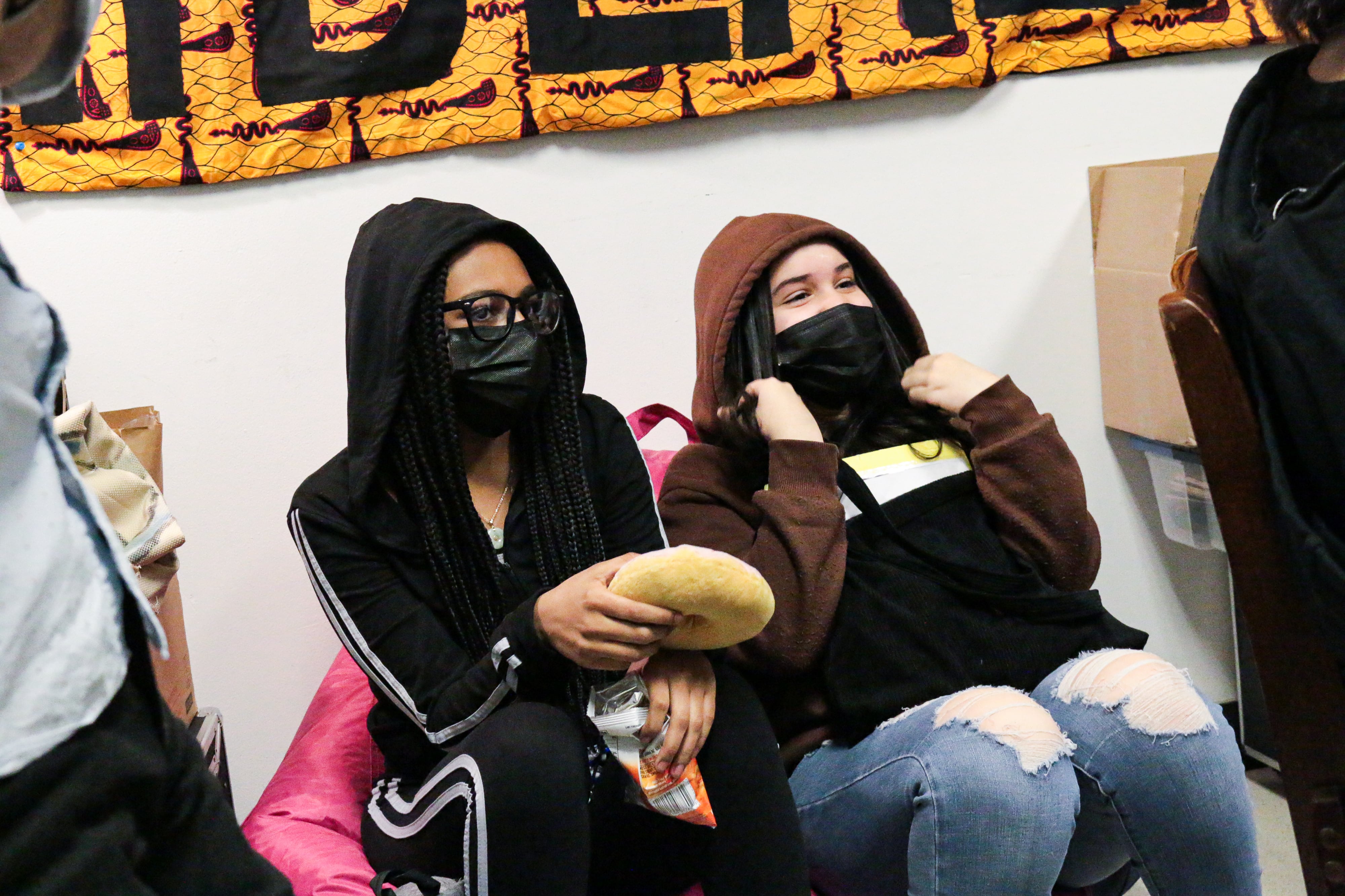After intense pushback from dozens of advocacy groups, New York City’s education department is no longer considering cuts to restorative justice programs, officials said Wednesday.
“There are some initiatives that may come off the table — there are others that we grow and expand,” schools Chancellor David Banks told reporters. “But we’re not making any reductions in restorative justice.”
Banks’ comments came as he laid out plans to maintain school safety this year, including replacing hundreds of school safety agents who resigned during the pandemic and boosting communication with parents during emergencies.
Bolstered by federal stimulus money, the city plans to spend over $21 million on restorative justice programs this year, roughly triple the amount compared with two years ago, according to the Independent Budget Office. The city is still “developing specific plans” for how that money will be spent but will generally continue programs that are already in place, said education department spokesperson Nathaniel Styer.
Advocates praised the decision to fund restorative justice, but pressed for more transparency. “With those threats now off the table, we again call for a detailed accounting of how [fiscal year] 22 restorative justice funding was used, how [fiscal year] 23 funding will be used, and for this accounting to be made public,” the Dignity in Schools Campaign, which supports restorative justice programs, said in a statement.
Under former Mayor Bill de Blasio, the city expanded restorative justice programs, approaches that are designed to reduce suspensions by encouraging circle discussions and peer mediations. Suspensions have fallen dramatically in the last decade, aided in part by reforms to the school discipline code that have made it more difficult to suspend students for a range of infractions.
But the current administration’s commitment to restorative justice was in doubt. Plans were in the works to slash restorative justice funding, according to a central office employee familiar with those programs who spoke on condition of anonymity for fear of retaliation. Several advocacy groups penned a letter to top city officials last month warning that the money was “at risk” and dozens of City Council members urged the department to avoid cuts to that program.
“When there was pushback, all of a sudden things changed,” the central office employee said.
School police get a boost
Banks on Wednesday also laid out several other school safety-related efforts, including hiring new school safety agents.
The ranks of school safety agents — unarmed police department employees who patrol school buildings — fell by more than 1,000 members early in the pandemic, leaving about 3,100 currently stationed in schools, Banks said.
Nearly 200 new agents are set to start on Thursday and the city plans to hire 650 more over the next year, but neither police nor education officials said how that will impact the total number of school safety agents accounting for those who leave during the year.
The announcement was swiftly criticized by some advocates who have pressed for the city to remove school safety agents from schools, or at least transition them from police department control.
But Mayor Eric Adams shelved the previous administration’s promise to reassign school safety agents to the education department, and Banks has pushed back against criticism that school safety agents are overly harsh or tangle students up in the criminal justice system. Although students at predominantly Black schools are less likely to have a favorable view of school police, large majorities of students, parents, and teachers agree that school safety agents help keep schools safe and respectful.
“They’re not some outside force that means harm to our children,” Banks said. “They are here every day to ensure the safety of our children.”
Active shooter drills for the city’s youngest students
Banks also highlighted a handful of other education department safety initiatives, pointing to concerns about violence as gun and other weapons confiscations on school grounds increased last year. Those increases were driven largely by items like tasers and were often carried by students who feared for their safety as they commuted. The city is planning to bring community organizations “with proven track records in youth support and violence interruption” into about 140 schools that have struggled with higher suspension rates and other incidents, officials said, though they did not share more details.
Officials said they are beefing up training in “emergency readiness,” including active shooter drills, and are providing those programs to preschool and early childhood programs for the first time. Some teachers have said they’ve received little or no formal training on how to properly conduct lockdown drills.
“It’s unfortunate that we have to be in a place where even early childhood providers, those who are working with our babies, have to receive a level of training to be prepared for the potential of an active shooter,” Banks said. “But that is the reality that we are facing.”
Banks also noted that the city is launching a new platform that will give principals and district staff the ability to issue “push notifications” to families in the event of lockdowns, evacuations, or other emergencies. When schools locked down after the Sunset Park, Brooklyn, subway shooting, he said some families found out from local news reports.
“My back-to-school message to students and families is that we take your physical and emotional safety seriously and that this will be a primary focus for us this school year,” he said.
Alex Zimmerman is a reporter for Chalkbeat New York, covering NYC public schools. Contact Alex at azimmerman@chalkbeat.org.






